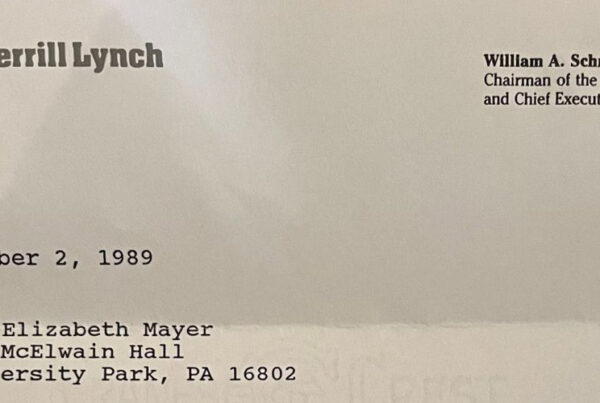
Article Summary: Generally, a networking event is one big blind date. You never know who you will meet next. Networking is all about the deliberate development of professional relationships. Just as with personal dating, business dating takes time. You wouldn’t expect to get married on the first date. The same holds true for networking. Here are five sure-fire steps to make your networking more focused and effective to capitalize on opportunities, eliminate distractions, and improve your sales and development results.
Networking as a Sales Tool – 5 Sure-Fire Steps to Increase Sales Success
Copyright © 2009. The Chief Storyteller®, LLC. and ThinkBusiness Magazine
Ira J. Koretsky
April 2009
In 2002, I started my business and started networking like never before. Attending some 10 to 12 events per week quickly became exhausting. After analyzing the events versus success results, the clear trend was I went to too many of the wrong events. Together with the preparation, follow up, and meetings I was draining energy from the prospects and events that mattered. Obvious right? It took a lot of frustration to make me realize my lack of success was due to my random and unstructured approach to networking.
I retooled my approach and developed a deliberate process. That meant being patient and most important, being deliberate. Networking is all about the deliberate development of professional relationships. Just as with personal dating, business dating takes time. You wouldn’t expect to get married on the first date. The same holds true for networking. Expect results only after the appropriate time has been spent building trust, sharing experiences, and demonstrating capability.
Benjamin Franklin said it best, “By failing to prepare you are preparing to fail.” Here are five sure-fire steps to make your networking more focused and effective to capitalize on opportunities, eliminate distractions, and improve your outreach and sales results.
By failing to prepare you are preparing to fail. – Benjamin Franklin
1. Develop an Ideal Customer Profile
Successful networkers know their target audiences. During my travels, I ask workshop participants and customers, “do you have an ideal customer profile?” It no longer surprises me when most people respond “no.” An Ideal Customer Profile (ICP) spells out the specific characteristics of a prospect that would most likely work with you as a provider, association, government agency, vendor, etc. A short list of examples to include in your ICP include:
- Type. Professional services
- Revenue. $15 to $50MM
- Employees. >250 employees
- In Business. > 5 years
- Location. Northeast
- Sector. Real Estate
- Pain. Growing quickly and looking to expand office space
Your marketing department should have a standard ICP spelling out each of the characteristics important to your organization’s success results. This way, the sales and engagement outreach teams pursue only qualified leads.
2. Develop Your Networking Event Plan
Now ask yourself, where do the key decision makers at these ICP organizations network? What associations, professional organizations, and social clubs are they members of? Search the Internet or ask colleagues to locate events to help you to meet them. Look for opportunities throughout the week, from 7 am to 7 pm. Overall, breakfast and dinner events yield the best results.
3. Use a Compelling Elevator Pitch
You have arrived at your event ready to meet your ICPs. Since you only have a few minutes to make a first and lasting impression, you need to make the most of your time. Be prepared to answer “what do you do?” with a compelling answer that screams, “Wow! Tell me more.” Your answer is a high-level, executive summary of your core business story. Commonly referred to as your elevator pitch, it should take you 30 seconds or less to say. An elevator pitch is in a way a litmus test. Told well, it engages people prompting a good conversation. If it is not engaging or interesting, people tend to transition away from you fairly quickly. Improve your elevator pitch with a variety of tips, how-to’s, articles, and other elevator pitch blogs here.
4. Circulate and Locate
Generally, a networking event is one big blind date. You never know whom you will meet next. He/she could be your next best friend, next best client, next best partner, or not.
Stop listening to your mother. Talk to strangers! Heed Stephen Covey’s habit number five: “Seek first to understand then to be understood.” Circulate through the room starting conversations your ICPs will be interested in. Read the magazines, websites, blogs, newsletters, and books they read. Within the first few minutes of meeting someone, qualify that person as an ICP, ideal business partner, business friend, or other. Based on your assessment, deliberately choose how you will direct the conversation, how to follow up, and how to exit politely.
Transition to a new person every five to 10 minutes. You are looking to locate people that you can help and those that can help you. The object here is to be deliberate with your conversations and patient with the results.
5. Evaluate Your Return on Networking
Many people comment that networking is neither rewarding nor fun. It can be both if you consistently evaluate, measure your results, and respond appropriately.
Experience shows that you should spend four to six months attending events and meeting people before you will realize any substantial results. As you network, evaluate your success results. Didn’t meet the people you wanted to? Think of different or complementary venues to attend. Perhaps you did not make any meaningful connections? As yourself, is my story resonating with people? Is the event filled with prospective ICPs? Over the course of time, decide what, how, and if you need to change your approach to networking.
Conclusion
“Work smarter, not harder,” always resonated with me because it helped me focus on priority activities. It simply was not a matter of putting in long hours to show results. The true test lay in the results.
This is what being a deliberate networker is all about: making the most of your time. It is deciding who you need to meet and cultivate to increase your business success. And sticking to your plan. It is hard work cultivating a promising contact over time as is allocating your time at events (as is making and keeping friends). It will pay off.
If you stick with networking event plan, your evaluations will show more success and you will find yourself having more fun.
Contact us to learn more about improving your networking and outreach success. Learn more about our communication, public speaking, and storytelling keynotes, workshops, coaching, and services.
Read More ThinkBusiness Articles
- When Nobody is Looking, Character Still Counts – Make Your Business Stories Credible (read)
- Shoulda, Woulda, Coulda – 5 Activities You Really Should Do (read)
- Business is Personal – 3 Tips to Accelerate Relationship Building with Small Talk (read)
- Make Networking Pay Off – How to Find the Right Events for You (read)
- The Art of Listening – 5 Ways Active Listening Improves Your Sales Success (read)
- Before You Make that Call – Use Research to Stand Out from Your Competition (read)
- Treat Everyone Like a Key Decision Maker – How Improvisational Humor Training Helps You Sell (read)
- Avoid Foot in Mouse Syndrome: Write Emails that Generate Results, Part 1 (read)
- Special Delivery: How to Write Emails Audiences Will Open, Part 2 (read)
- Networking as a Sales Tool – 5 Sure-Fire Steps to Increase Sales Success (this article)
- Thinking of Going Global? Use Social Media to Accelerate Your International Success (read)
- Better Blogging for Better Results – 8 Tips to Generate Opportunities from Blogging (read)
- The “What Do You Do?” Answer – A Key Tool in Your Sales Toolbox (read)
- Business is Personal – 3 Tips to Build Rapport in Sales Meetings (read)
- It’s Who Knows You – 3 Little Known Ways to Turn LinkedIn into a More Valuable Tool (read)
- Keep Your Top Customers Forever with Internal Champions, Part 1 (read)
- Keep Your Top Customers Forever with Internal Champions, Part 2 (read)
- Life Lessons – Everything I Learned About Sales, I Learned From My Parents (read)
Updated Content 2012, Updated header photograph 2019
Photography Source: DepositPhotos



